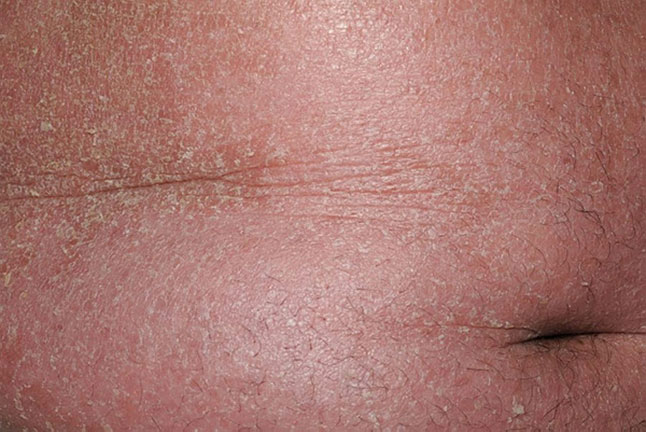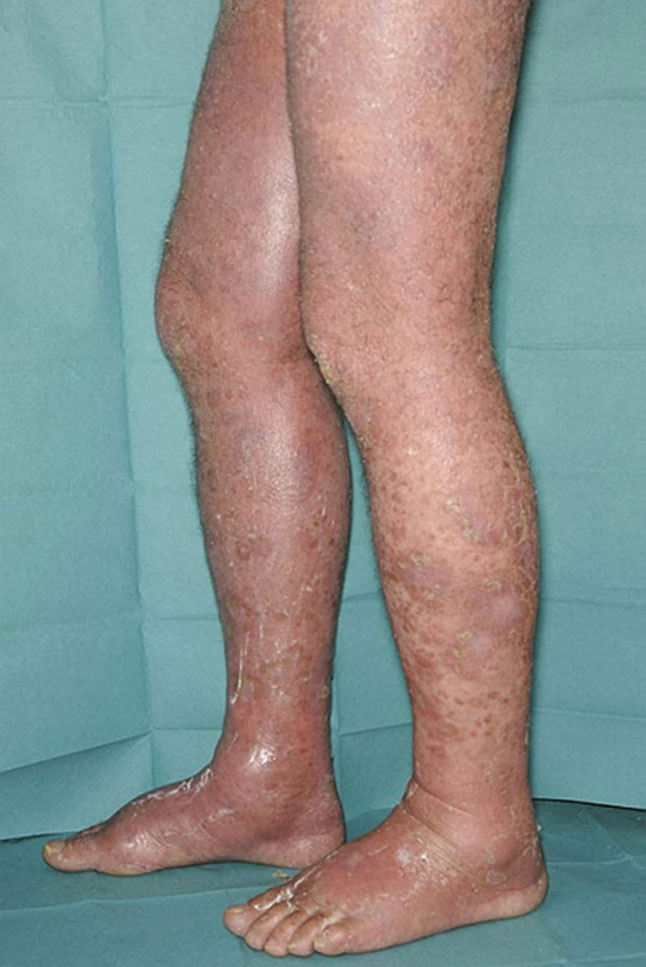- Home
- Cases
- Revision notes
- Further online reading
- Figures
- Your feedback
- Become a reviewer
- 'at a Glance' series
- More student books
- Student Apps
- Join an e-mail list





This 55-year-old man presented with a few weeks' history of feeling generally unwell with associated dry red skin affecting most of his body. His past medical history was unremarkable except for some scaly pink patches of skin on his elbows, knees and scalp. His brother also apparently had similar scaly patches on his knees.
(a) What skin sign is being described in this patient?
(b) What is the most likely underlying cause of his skin problem?
(c) What clinical features would you expect to find in this patient’s nails?
(d) Is this patient’s family history relevant?
(e) What are the potential complications of the present state of this patient’s skin?
(f) How would you manage this patient during this acute presentation?
(g) What other underlying causes should be considered in a similar presentation to this patient?
See Chapters: 12, 16.